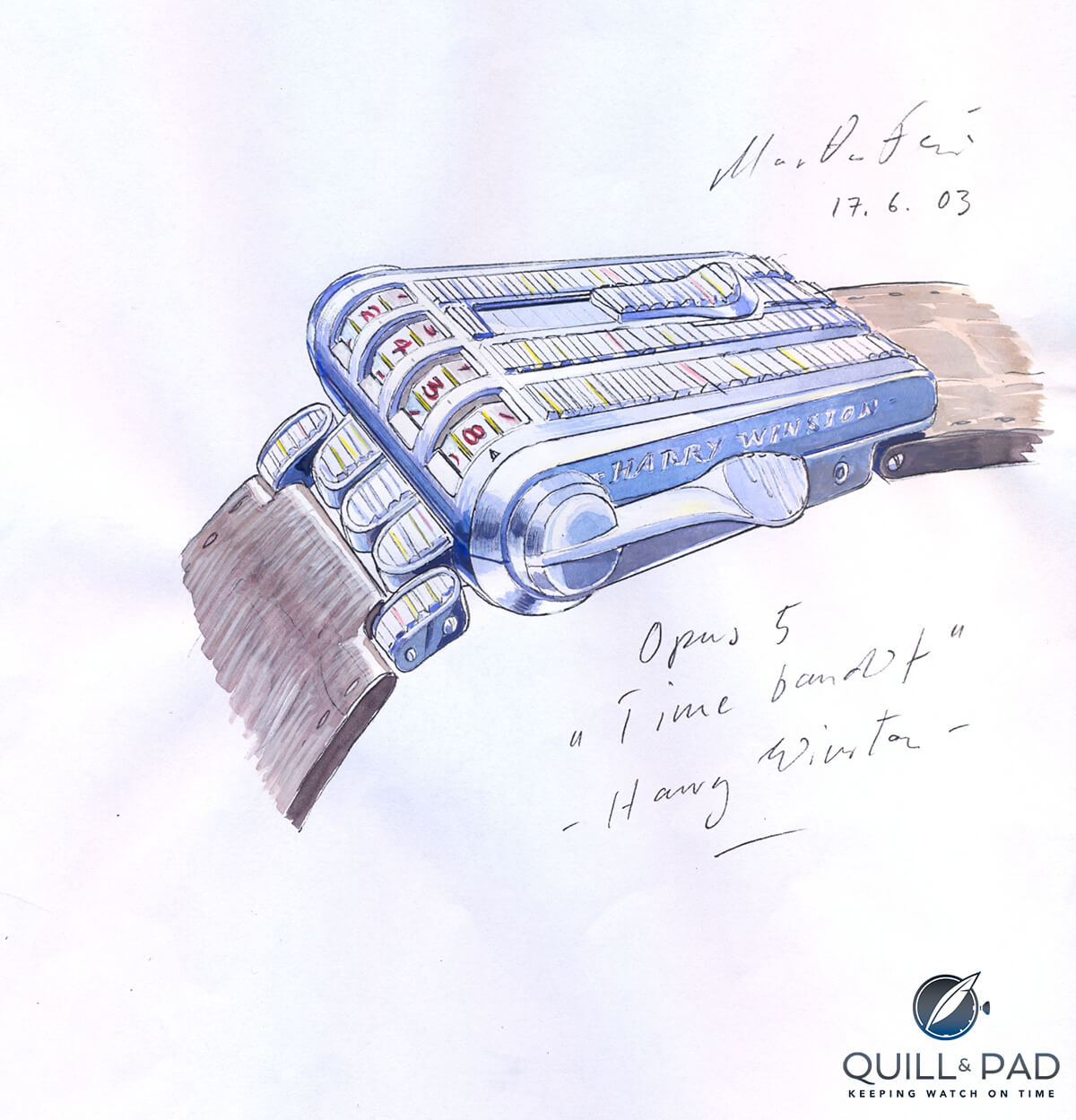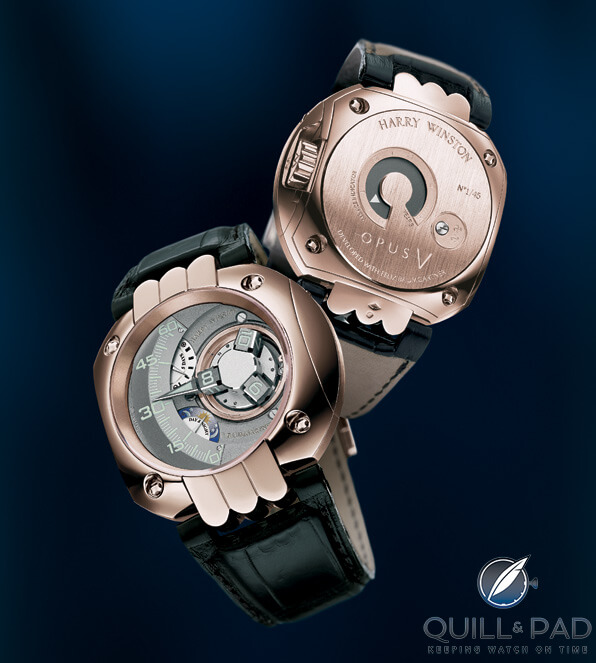One interesting trait of the Harry Winston Opus-series watches is that the creators behind them can almost instantly be identified from the watches.
The reason for this, with just a few exceptions, is that the Opus watches have generally built upon complications or signature elements already existing in that watchmaker’s own arsenal.
A notable exception was Vianney Halter’s Opus 3, which is perhaps one of the reasons that it took so long to realize. The Opus 3 was a completely new digital display concept, requiring mechanics that had not existed before.
The Harry Winston Opus 5 with Urwerk’s Felix Baumgartner could also have been one of those special Opus models, whose origins would have been less easy to discern. As this drawing by Urwerk designer Martin Frei from June of 2003 shows, one of the original ideas behind Urwerk’s Opus 5 was also a digital display.

Urwerk’s Time Bandit concept for the Opus 5 had slot machine-style indications: the time displayed after the handle was pulled and the rollers stopped spinning
Another element to note here is the crank on the right side of the case, which armed and spun the indication rollers like a slot machine. When they were done spinning they would stop at the correct time. To complete this would have required a complication on the order of a minute repeater. . .but much more complicated.
A crank actually appeared on the duo’s 2014 EMC model, though that was not conceived for gambling with time but rather for charging a super capacitor.
The case in this drawing shows both signature elements of Urwerk (typical asymmetric case) and Harry Winston (the three “lips” between the lugs).
According to this drawing, this concept for the Opus 5 had the working title of “Time Bandit” because of the similarity between the front of the display and a slot machine.
This is not the design that Harry Winston introduced in 2005 as Baumgartner felt there simply was not enough time to make the prototype perfectly reliable before its introduction at the Basel Fair that year. A real perfectionist, this seriously went against Baumgartner’s grain.
So the Opus 5 that did emerge that year was based upon Urwerk’s now-famous satellite time display comprising three cubes that turn and rotate to show the current hour, while a pointer indicates the minute. More conventional power reserve and day/night displays round out the indications on the front, while the Urwerk-typical control board on the back features a service indicator and a timing fine adjustment screw.
The very unusual 50 mm case housing the Harry Winston Opus 5 differentiated the watch greatly from Urwerk’s own. To this day, the Opus 5 remains one of the most popular of the entire series.
For an overview of the entire Harry Winston Opus series from 1 all the way through 13, please read The Harry Winston Opus Series: A Complete Overview From Opus 1 Through Opus 13.
Quick Facts Opus Five (the real one)
Case: 50 mm, pink gold or platinum
Movement: manually wound movement with 122 hours power reserve
Functions: hours (satellite), minutes (retrograde) on front; power reserve indication, day/night indication, five-year service indication on back
Limitation: 45 pieces (pink gold), 45 pieces (platinum), 7 pieces in platinum set with diamonds, 3 pieces in platinum set with baguette-cut diamonds for 100 total pieces
Price: most recent auction hammer price was $253,859 (Christie’s Important Watches Hong Kong, June 2015)






















































Leave a Reply
Want to join the discussion?Feel free to contribute!